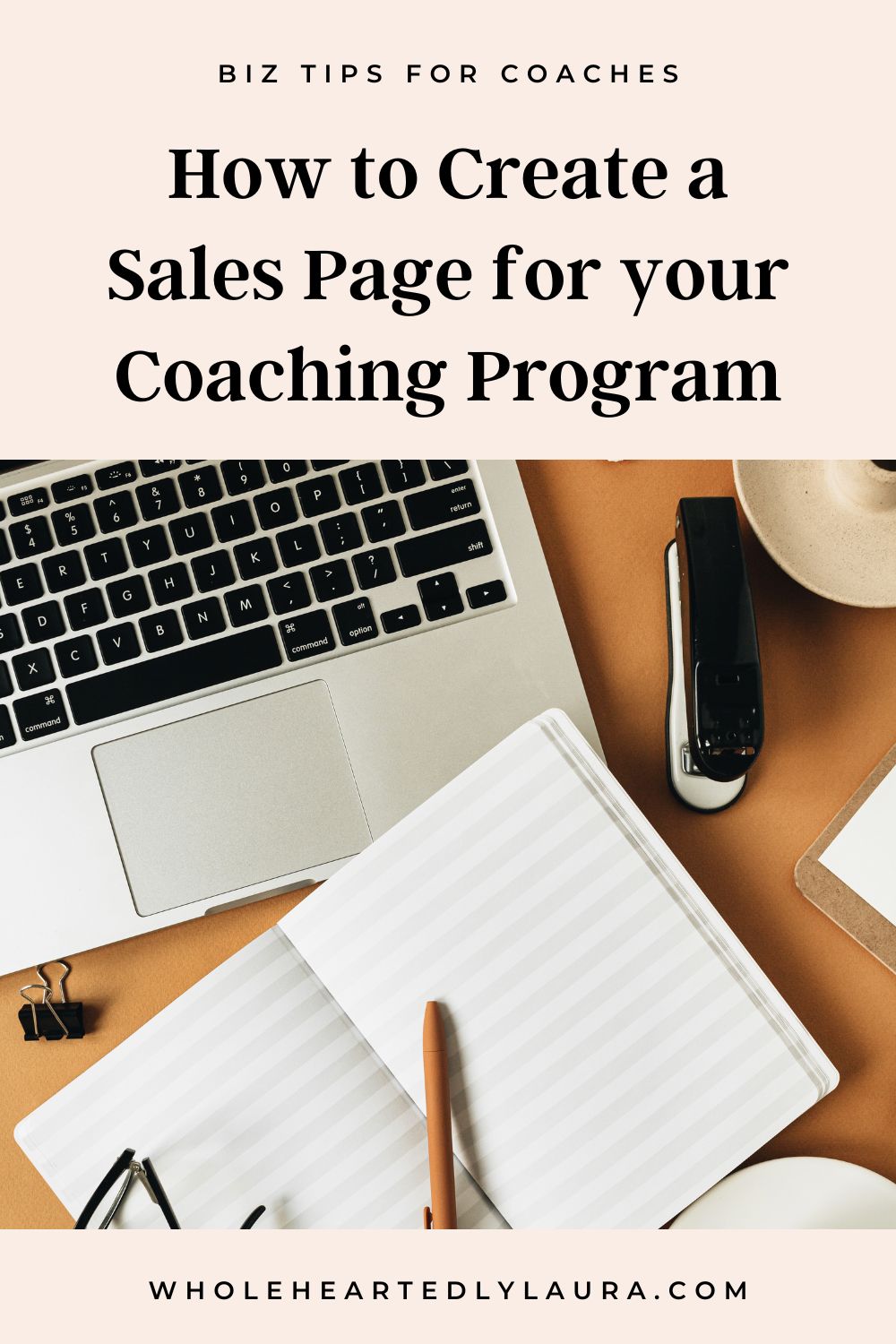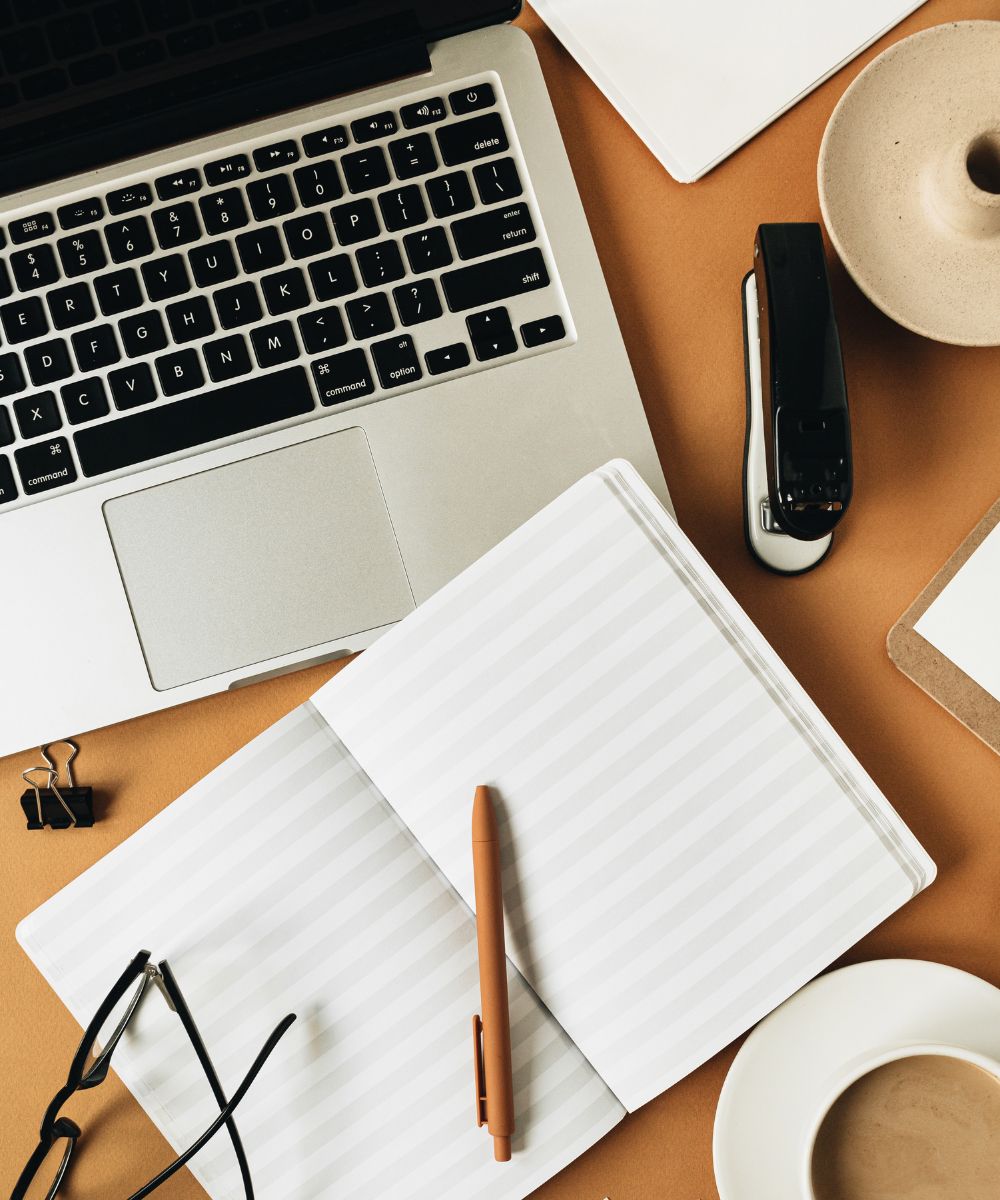If you’re a health or life coach who has a coaching program you’re going to need to create a sales page to help you sell it. In this blog post I’m guiding you through everything you need to know about writing and creating sales pages that help you book more clients.
Watch this episode on YouTube and subscribe to my channel here
Listen to this episode on The Wholehearted Business Show Podcast: Listen on Apple Podcasts / Listen on Spotify
What is a Sales Page?
A sales page is a dedicated page on your website (or other platforms as we look at below) that highlight the value and benefits of your coaching services. It’s your opportunity to communicate directly with potential clients, addressing their challenges and showcasing how your coaching can help them.
Design + Copy
When it comes to putting a sales page together, you need to consider two key elements, the design and the copy. In this blog post we’re going to focus on the copy. However, don’t completely overlook the design side of things – good design helps people engage with and consume the content of your page so it’s just as important as the words you use.
Where to Present Your Sales Page
Ideally, you’ll have your sales page on your website. This will also give you the most design capabilities. However, if you don’t have a website yet, don’t worry. There are several other platforms you can use. There’s no need to wait until you have a website to share something like this with potential clients.
Here’s a few alternative places to create and share a sales page if you don’t have a website.
Landing Page – Many email service providers offer landing page creation tools such as Mailerlite and Convertkit (soon to become Kit)
Canva – You can design a sales page in Canva and publish it as a web page or download as a PDF
Google Docs – Create a shareable Google Doc or PDF.
Notion – Publish a Notion page and share the link.
The goal is to make your sales page accessible in some way to potential clients to view it.
Key Elements of a Coaching Package Sales Page
Now we’re going to look at some of the key things you should include in a sales page. This is the basic structure I always start with whenever I’m writing any kind of sales page copy.
If you get stuck, it’s ok to use Chat GPT as a writing assistant to help you brainstorm ideas!
Headline Statement
A headline statement is a short sentence or paragraph that grabs peoples attention and gets them to read the rest of the page. A good place to start with this is to think about a key challenge your people are facing or an aspiration they have and say something connected to this.
Where They Are Now
The next section is about highlighting the key challenges your people are facing now. What are they struggling with or finding hard? What does life look like for them now? Can you bullet point some key problems they face?
It’s really important to show that you understand where they are at the moment. Coaching packages are ultimately about supporting people to experience some kind of transformation. In order to do that you need to know the starting point of the people you coach, and they need to feel that you understand where they are at and what they are struggling with.
Don’t forget to use ‘in real life’ examples in your copy in this section – tell little stories about how some of these challenges are manifesting for them as day to day scenarios. This will create more resonance and connection, both of which are key factors in someone becoming a client.
Introduce Your Coaching Package as the Solution
Next we need to present your coaching package as the answer to their problems and challenges.. Highlight its unique selling points and explain how it offers real solutions to their challenges. If you’ve created a signature coaching program that is underpinned by a signature method or framework, now is a good time to introduce it.
Where They Want to Be
This section is all about focusing on the outcomes of your coaching package. This is the ‘after’ you’re taking people in their transformation. What goals could they achieve? How will they be experiencing their life now?
Be sure not to over promise results, rather base what you say here on what previous clients have achieved. If you’re a newer coach, you might need to use a bit of guesswork to begin with, but making outcomes realistic will be more helpful in getting clients than wildly over promising and then not being able to achieve those results.
You can also evidence these outcomes by using testimonials and social proof in your sales page too.
Why They Should Work with You
This is where you should toot your own horn! Explain to people why they should work with you as a coach. Highlight your experience, knowledge, skills and qualifications as well as values and what you stand for if needed.
Who This Is For / Not For
This section is a good opportunity to call in the specific people you’d like to work with and repel people who won’t be the right fit. You can have a section that might explain who your coaching program is not for, especially if you have a specific scope of practice.
The who is this for section can be helpful in being extremely clear so there’s no doubt in the mind of your ideal client that this is designed specifically for them.
Call to Action (CTA) and Next Steps
This is where you bring it all together and invite people to take the next step, whether that’s a buy now button, a link to book a discovery or connection call or a sign up form.
You will also want to list out the ‘features’ of your coaching package in terms of length of time, number of sessions, support and resources included etc.
This is also where you’ll share the price. I tend to suggest that coaches include prices on their sales pages, however there may be relevant strategic or sales process reasons not to, there can be pros and cons either way.
This section is also a good one to include some testimonials and social proof alongside it to reinforce the evidence of the results you can help people achieve.
FAQs / Address Objections
Finally you may include a Frequently Asked Questions section. This can indeed include actual FAQ’s, but this section can also cleverly be used to speak to, and help overcome common objections clients might have to signing up for coaching.
Common objections tend to be around time, money and results – so think about how you can speak to these objections and reassure potential clients.
Making It Yours
This structure is a guideline, not a rule book. Feel free to tweak it to match your style and audience. The key is to ensure that your sales page communicates the value of your services clearly and convincingly. Experiment with the order of sections if it feels more natural to your narrative.
Recap and Next Steps
Here’s a quick recap to help you structure your sales page:
– Headline
– Where they are now
– Present your coaching package as the solution
– Desired outcomes
– About you
– Who this is for/not for
– Call to action
– FAQs
By following this structure, you’ll be well on your way to creating a compelling sales page that converts. Remember, the design should complement your copy, making it easy for visitors to understand and engage with your content.
↓Pin for later ↓





0 Comments